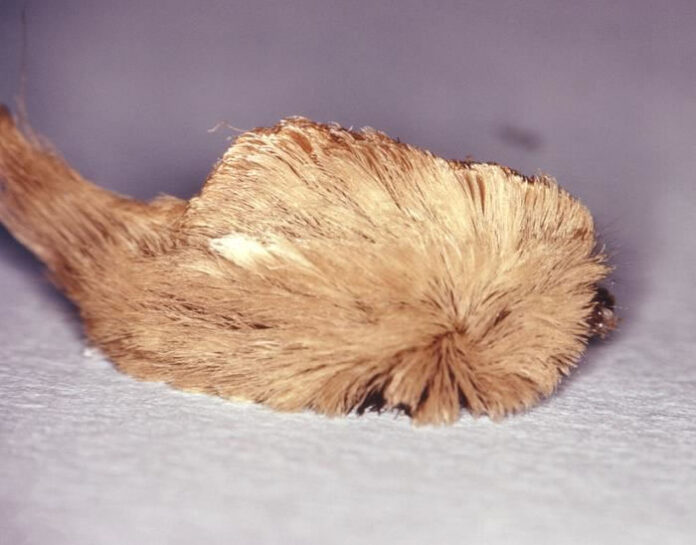Caterpillars are known for their transformative journey from a tiny larva to a beautiful butterfly. However, these creatures have now caught the attention of scientists for an entirely different reason. The University of Queensland researchers have made a groundbreaking discovery in the field of medicine. They have found that the venom of hairy North American caterpillars may be key to treating human cancer. These caterpillars, known as “puss caterpillars,” are native to North America and are infamous for being the most venomous insects in America. Despite their fluffy and harmless appearance, a mere touch from them can cause excruciating pain, hives, and irritation that can last for a long time. The sting has been compared to that of a box jellyfish, known for its potent venom.
However, Queensland University researchers believe that this venom, which causes intense pain, could also be used to combat cancer. They have discovered that the venom of the North American caterpillar, specifically the asp caterpillar, contains toxins that can “punch holes” in cells. This unique characteristic of the venom could potentially revolutionize the delivery of lifesaving drugs, especially in diseases like cancer.
Dr. Andrew Walker, a researcher at the University of Queensland, expressed his surprise at the discovery, stating that the asp caterpillar venom is unlike anything they have seen before in insects. The venom’s ability to create holes in cells is similar to the behavior of bacterial toxins such as E. coli and Salmonella. It is believed that the asp caterpillar has evolved over millions of years to develop this mechanism, possibly acquiring it from bacterial genetics.
The researchers are now focused on understanding the relationship between caterpillars and their sophisticated defence mechanisms, including venom. They believe that venoms are rich in molecules that have the future potential to develop pesticides, medicines, or even scientific tools. By engineering the venom molecule, it might be possible to target beneficial drugs delivery to healthy cells to also cancer destruction cells.
While this discovery is certainly promising, it is essential to note that there is still a long way to go before venom can be used as a medical treatment. Researchers must conduct extensive studies and trials to ensure their safety and effectiveness. The journey from discovery to implementation of remarkable medicines has historically taken considerable time.
In conclusion, the University of Queensland researchers have stumbled upon a surprising potential in caterpillar venom. The venom’s ability to create holes in cells could pave the way for innovative drug delivery systems and targeted cancer treatments. While this discovery offers hope for the future, more research is needed to harness the full potential of caterpillar venom in medical applications.







